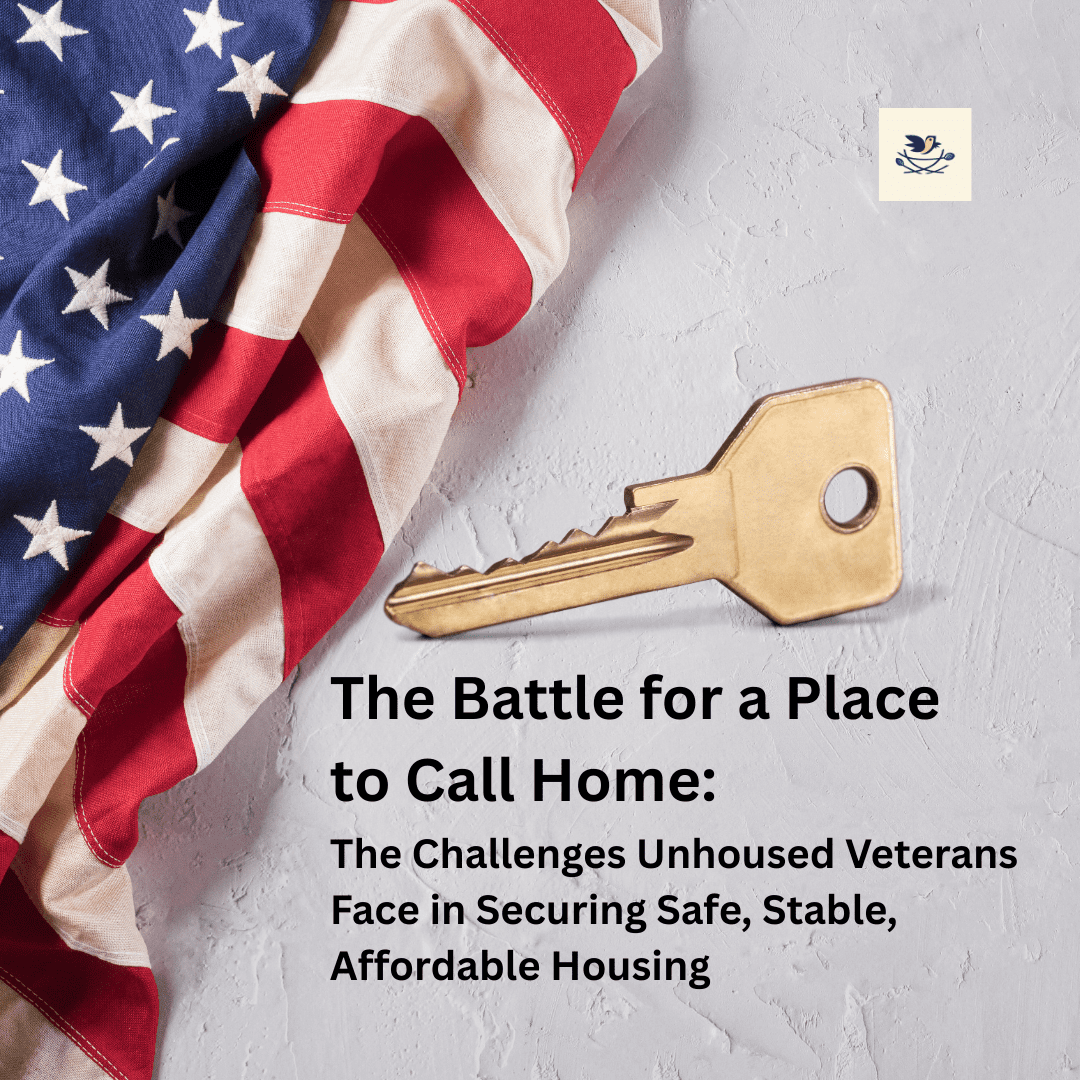
When someone walks through our doors looking for help at Nest Community Shelter, they often come with more than just the weight of being unhoused on their shoulders. They often carry trauma, sometimes illness, and an uphill battle to secure stable housing. For some, this means starting all the way at the beginning, with securing documentation and ID for others, simple financial management, saving, and planning is all it takes. Either way, all of our guests, when they are ready to secure stable housing, must all overcome the same barriers to housing, credit scores, and housing deposits. Today, we want to discuss two of the most significant obstacles we encounter most often with our guests: credit scores and security deposits.
The Credit Score: A Three-Number Barrier
Here’s something that might surprise you: credit scores are still a massive indicator of a renter securing housing. According to the local housing nonprofit Homeward Bound Villages,
“Credit scores have become a near-universal requirement in today’s rental market. Nearly 90 percent of landlords reported that they checked for previous evictions, income, job history, rental history, credit scores, and criminal backgrounds when making their decisions. For many property managers across Indiana, a minimum credit score between 580 and 670 is standard, and anything below that threshold results in automatic denial.”
When someone becomes unhoused, priorities can change very quickly, as they move into survival mode, struggling to meet basic needs like food and shelter. Often, bills go unpaid. Medical debts pile up. Credit scores drop. According to U.S. News Money, 51% of background checks conducted by employers include a credit check, which means that bad credit not only affects housing but can also impact the ability to secure a job that provides housing. It’s a cycle that can be incredibly challenging to break.
Furthermore, more than half of rental applications are submitted online. When a rental application is submitted online, often these applications are never reviewed by a human, but an AI tool that is meant to reject applicants that do not actively fit the criteria. Some estimate that up to 90% of online applications are reviewed this way. A computer will not understand how hard a someone worked to overcome homelessness, how they are actively working to repair their credit, which takes time, like a human would.
When “Just Save Up” Isn’t That Simple
Now, let’s discuss security deposits. They’re meant to protect landlords. When a renter leaves a home, these funds can be used to repair any damage done by the tenant. However, when you’re trying to overcome being unhoused, coming up with the first month’s rent, last month’s rent, AND a security deposit can feel impossible. When you combine this with an application fee, and a background check, or credit check, this can and often is thousands of dollars, before the renter ever moves in.
In 2020, the average rent for a one-bedroom apartment nationwide was $1,621. In our community, the average is about $1,200. When landlords require three times that amount upfront, which many do when they see a low credit score, we’re talking about nearly $5,000 or more to get keys to an apartment. Studies show that 40% of Americans can’t afford an unexpected $400 expense, so imagine how impossible $5,000 feels when you’re living paycheck to paycheck, are on disability, or are living in a homeless shelter. Coming up with these funds, while trying to repair credit to secure housing is a monumental task.
All of our guests want is a safe, stable home, somewhere safe to lay their head at night. Most of the guests staying at Nest Community Shelter have regular employment, but it simply is not enough. When deposits and credit scores come into the equation, sometimes it doesn’t matter how hard someone works to repair the financial damage. What is important to understand is that the slide into becoming unhoused can be gradual or sudden, but either way, economic damage is often done along the way that will pose real barriers to reacquiring stable, safe housing.
The Real-World Impact
When we see people struggling with these barriers, we’re not just seeing numbers on a page; we are seeing our guests, real people who are working hard to rebuild their lives. With the dream of a front door of their own, a bathroom of their own, and a bed of their own. These are simple things to most, but they mean the world to our guests.
For some of our guests who have worked beyond hard, leaned how to better manage their finances, and found a potential place to live, it can all fall apart because of three little numbers, their credit score or a massive slew of deposits and fees. The real-world impact is that this current system can be a true barrier to those who are truly working to secure safe, stable housing.
What We Can Do Together
At our Nest, we work with people every day who are ready to get back on their feet. They want to work or are actively working. They want to pay rent. They want stability for themselves and their families. But these invisible barriers, a three-digit number, and a large sum of money they can’t save while surviving often block the path.
We need more landlords willing to look beyond credit scores and applications reviewed by humans, not AI, that don’t discount any renter based on a single number. We need more programs that help with those upfront costs. We need policies that recognize that someone’s past financial struggles don’t define their ability to be a good tenant today.
Because at the end of the day, everyone deserves a place to call home. And sometimes, all it takes is someone willing to give them that chance.
Sources:
- Homeward Bound Villages. (n.d.). The credit catch-22: How poor credit traps low-income Hoosiers in a cycle of housing instability. https://www.homewardboundvillages.org/the-credit-catch-22-how-poor-credit-traps-low-income-hoosiers-in-a-cycle-of-housing-instability/
- Graeber, F. (2020, May 11). Homelessness and job security: Challenges and interventions. University of Michigan School of Public Health. https://sph.umich.edu/pursuit/2020posts/homelessness-and-job-security-challenges-and-interventions.html
- Williamson, A. (2021, June 1). Security deposits are a barrier to affordable housing. What can be done? Shelterforce. https://shelterforce.org/2021/06/01/security-deposits-are-a-barrier-to-affordable-housing-what-can-be-done/
- Couloute, L. (2018, August). Nowhere to go: Homelessness among formerly incarcerated people. Prison Policy Initiative. https://www.prisonpolicy.org/reports/housing.html
- Farmer, B. (2023, September 11). Medical debt is putting some Americans at risk of homelessness. NPR. https://www.npr.org/sections/health-shots/2023/09/11/1198534328/medical-debt-housing-security-homelessness


